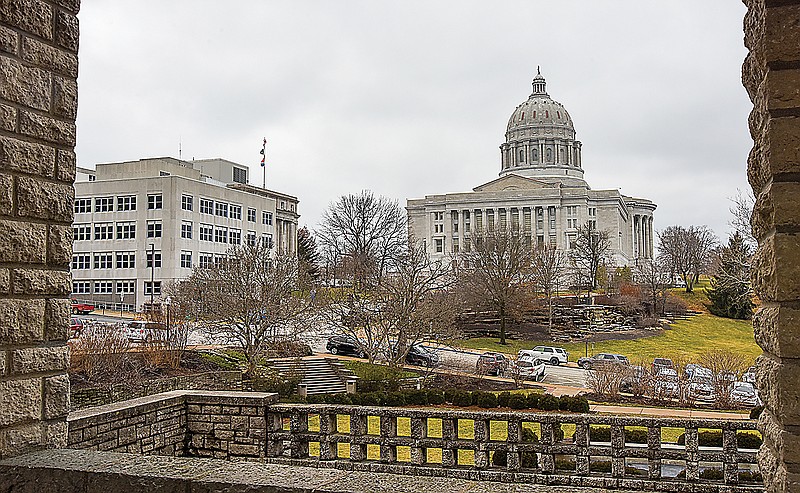State Sen. Mike Bernskoetter, R- Jefferson City, presented his Capitol Complex bill Tuesday to the Senate Economic Development Committee.
Senate Bill 36 would create a means to help fund preservation of five historic state-owned buildings in downtown Jefferson City.
The Missouri state Capitol, Missouri Supreme Court building and Missouri Governor's Mansion remain in use for their original purposes.
Bernskoetter's bill would create a tax credit for donations to help preserve and maintain the buildings.
"Ninety percent of funds would be used for renovations, 7.5 percent for maintenance, and 2.5 percent for fundraising and administrative costs," he told the committee.
If passed, the Capitol Complex Tax Credit would create separate Capitol Complex Fund accounts to receive monetary donations, one account for rehabilitation and renovation and the other for maintenance.
The fund would sunset after six years, Bernskoetter said.
The Capitol Complex includes the Capitol, the Supreme Court building at 207 W. High St., the Old Federal Courthouse at 131 W. High St., the Missouri Department of Transportation Central Office building at 105 Capitol Ave., and the Governor's Mansion at 100 Madison St.
Lt. Gov. Mike Kehoe told committee members the bill would give lawmakers another tool in their toolbox, allowing them to find investment dollars for the complex.
"At the end of the day, it is an unfunded liability on our balance sheet," he said.
He pointed out the Missouri Governor's Mansion underwent significant renovations about a year and a half ago.
As heating and cooling contractors installed a duct, they discovered an old oak beam above the dining room table was cracked and failing. It wasn't part of the original scope of the project.
The finding demonstrated the old structures may need constant attention, and they benefit from regular maintenance.
With a tax-credit bill that allows some private investment, some partnership as a tool, taxpayers would receive a better return on their investments, Kehoe continued.
Donors would receive credits against state income taxes worth 50 percent of monetary donations and 30 percent of value of eligible artifact donations. Tax credits that exceed the donor's tax liability could be carried forward four years or refunded if the donations were monetary.
Tax credits would be capped at $10 million per year, with revenue exceeding that qualifying for tax credits the following year. In the event of more than $10 million being donated during any given year, donors may ask for their donation back.
Randy Scherr, a member of the board for Friends of the Missouri Governor's Mansion, said passing the bill would be like giving free money to the state.
"Right now, we're struggling to take care of just the interior of the mansion," Scherr said. "But if we could raise enough money - and we think this is an avenue for all of those entities - we would be able to help with Capitol projects."

